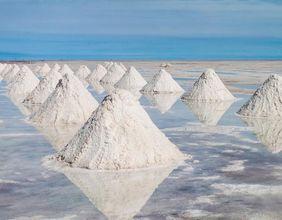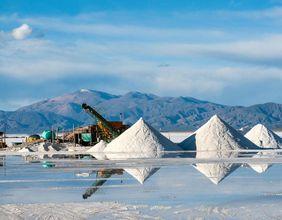Highlights
- BHP's revenue and profit show a declining trend
- Strong gross margin and return on equity metrics
- Moderate debt levels offer financial stability
The share price of BHP Group Ltd (ASX:BHP) has declined by approximately 3.08% since the start of 2025, drawing renewed attention from investors toward one of Australia’s most prominent resource companies. Known for its robust operations across global mining and a key player in many Australian portfolios, BHP remains in the spotlight not just for its share price movement but also for its reputation among ASX dividend stocks. As a consistent dividend payer, BHP continues to appeal to income-focused investors seeking stability and long-term value in the Australian equity market.
A Look Into BHP’s Business Landscape
BHP Group, a diversified resources powerhouse, engages primarily in the exploration and production of commodities including iron ore, copper, and coal. The company also holds interests in gold, silver, uranium, and is making strides in the fertiliser sector. With operations spanning several continents, BHP has been a major contributor to the raw materials fueling global infrastructure and industrial development.
Financial Performance Snapshot
Despite its scale and diversified exposure, BHP’s financials reveal some cautious trends. The company reported an annual revenue of AUD 56,027 million, reflecting a slight decline with a -0.7% compound annual growth rate over the past three years. This shows revenue pressure amidst fluctuating commodity prices and operational challenges.
However, profitability from core operations remains robust. BHP reported a gross margin of 82.3%, suggesting strong efficiency in converting raw materials into revenue before overhead costs. On the net profit front, the company posted AUD 7,897 million in FY24, down from AUD 11,304 million three years ago — a decline translating to a -11.3% CAGR.
Evaluating Financial Health
BHP's balance sheet shows signs of resilience. The company maintains a net debt of AUD 9,467 million, balanced by healthy equity levels. Its debt-to-equity ratio of 45.3% indicates that BHP maintains more equity than debt, providing a cushion against interest rate volatility and economic shifts.
Importantly, the return on equity (ROE) stands at 19.7%, signaling strong capital utilisation and operational discipline. This level of ROE suggests that BHP continues to generate meaningful shareholder value, even amidst profit contractions.
Broader Market Context
Given BHP's inclusion in the ASX 200 today, its movements have ripple effects across the broader index. Many Australians are exposed to BHP through superannuation funds, ETFs, and LICs, making its performance relevant to a wide range of investors.
While BHP showcases some financial headwinds, its strong margins, moderate leverage, and efficient capital allocation reinforce its position as a major force in the Australian resource sector. As market dynamics evolve, monitoring how BHP adapts and leverages its global footprint may offer important clues about its longer-term trajectory.





